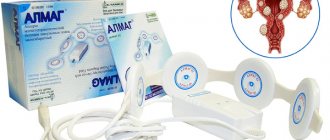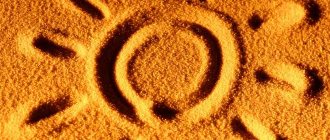Features of candle treatment
Uterine fibroids are understood as a hormone-dependent benign neoplasm that has the shape of a node. Since the growth of the myomatous node is influenced by the level of sex hormones, the main emphasis in the treatment of pathology is on hormonal drugs that allow the patient to correct the hormonal background.
In order to increase immunity or cure inflammatory processes that have arisen in the genital organs, suppositories, also called suppositories, are prescribed. They are inserted into the vagina or anus.
Suppositories are one of the most effective and comfortable forms of medication for the treatment of gynecological diseases, including uterine fibroids.
The good effect of candle therapy is determined by the following properties:
- The active component included in the suppository very quickly enters the bloodstream and begins to act. In terms of the speed of introduction of the medicinal substance into the blood circulation, suppositories are compared with intravenous injections. The fact is that there is a rich network of blood vessels in the vagina and rectum.
- Suppositories allow you to deliver the required doses of medication extremely close to the uterus - the organ in which pathological processes develop.
- The use of suppositories reduces the load on the liver. Since the medicine does not pass through the stomach and small intestine, it is not metabolized by the liver. Thus, it is possible not only to reduce the load on the liver, but to ensure minimal loss of the active substance of the drug.
- Allows you not to interrupt therapy during menstruation. During critical days, suppositories are inserted not into the vagina, but into the anus.
- The introduction of suppositories into the anus additionally helps to normalize stool, which is important for increasing immunity.
- When using suppositories, allergic reactions occur much less often than when taking medications in the form of tablets and drops.
It should be borne in mind that suppositories for uterine fibroids are part of complex therapy and are not the main means of treatment.
Indications for use
The use of suppositories for uterine fibroids is indicated in the following cases:
- Myomatous nodes are small in size - the diameter of the formation is no more than 2 cm or 4 obstetric weeks.
- The course of the disease is accompanied by severe pain.
- There is no uterine bleeding.
- The patient is in stable condition.
The use of suppositories can reduce the intensity of the symptoms of the disease, relieve inflammation and provide other therapeutic effects, but they cannot cure fibroids alone. They are prescribed as part of complex therapy for uterine fibroids.
Mode of application
General rules for the use of suppositories for the treatment of uterine fibroids have been developed:
- Use only as prescribed by a doctor. You cannot self-medicate if you have myomatous nodes. If the disease is neglected, serious complications are possible, including the development of infertility.
- Before starting treatment, you must carefully read the instructions and follow them.
- Suppositories must be administered after hygiene procedures.
- If the instructions do not say when to use the suppository, then it should be administered before bedtime.
Proper use of candles will allow you to obtain the maximum therapeutic effect.
Contraindications
Treatment with suppositories, like other medications, has certain contraindications:
- After surgery.
- There is damage to the mucous membrane of the vagina, uterus or cervix.
- Menstruation is in progress.
- Uterine bleeding began.
- The woman is allergic to some substance that is part of the candle.
When menstruation begins during treatment, you should consult your doctor.
When using some suppositories, doctors advise not to interrupt the treatment regimen and insert them into the anus, while others advise to interrupt therapy until the end of the critical days.
Side effects
Suppositories for uterine fibroids do not cause side effects. But each body is unique, and a woman may be allergic to one or more components that make up the product. If after the introduction of the first suppository a woman has an allergic reaction, she should immediately consult her doctor.
Contraindications
Any suppositories for the treatment of fibroids are selected individually. All drugs have a number of restrictions:
- For vaginal forms - the period of menstruation.
- Individual intolerance.
- History of allergic reaction.
- Pregnancy and breastfeeding.
Suppositories for the treatment of fibroids are not used as monotherapy, as they are not able to completely cure the pathology. Most suppositories are made from natural ingredients and are harmless to use. Despite this, it is recommended to consult a doctor before use to avoid complications.
Suppositories for uterine fibroids and other gynecological problems are one of the popular forms of medications, which are as effective as tablets and even injections. They can be used rectally or vaginally, and are sometimes used interchangeably. The main advantage is that it produces an effect directly near the fibroids.
Among the most popular are Longidaza, with propolis, sea buckthorn, ichthyol, Extra, Phythoraxin, Gero, Tucophytomol suppositories. As for Ovestin, they are not recommended, as they can provoke the growth of a node.
Read in this article
Types of candles
Suppositories for the treatment of uterine fibroids come in two types: vaginal and rectal. Vaginal suppositories are inserted into the vagina, and rectal suppositories are inserted through the anus into the rectum.
When treating uterine fibroids, vaginal suppositories are mainly prescribed, which are placed closer to the site of the disease, and rectal suppositories are rarely used.
Rectal
Rectal suppositories have an oily, dense structure that allows them not to melt in their hands while a woman inserts them into the rectum. The inserted suppository begins to melt after about 20-30 minutes of contact with the mucous membrane. When the candle melts, its active substance is absorbed into the mucous membrane and enters the bloodstream.
The suppository must be inserted into the anus as deeply as possible so that it can be fixed in the rectum and not come out during sleep.
Suppositories are not recommended for use in cases of hemorrhoids, fissures and other damage to the rectum and intestinal bleeding.
Vaginal
Vaginal suppositories are more often called tablets. They look like uncoated tablets with an oval or round elongated shape. They are inserted into the vagina, trying to place them as deep as possible. In order for the candle to stick better, after installing it, it is recommended to lie down for about 10 minutes.
Vaginal suppositories can be oil or cream based. Upon contact with the mucous membrane, they begin to melt and release the active substance. The suppository is absorbed in about 1 hour. Therefore, after installing it, you should not shower for an hour.
Instructions for making a tampon
To treat cervical erosion, they use not only suppositories with sea buckthorn (suppositories), but also tampons. Tampons are made by hand immediately before insertion into the vagina.
Attention! You cannot use hygienic tampons, because their action is aimed at absorbing liquid, and the task of a therapeutic tampon is to release the composition.
When making a tampon, follow several important recommendations:
- for a therapeutic tampon, use only sterile gauze, cotton wool, and bandage;
- sea buckthorn oil or other medicinal composition should be abundantly absorbed into the tampon;
- The size of the tampon is slightly larger than the hygienic one you are using.
A tight tampon is twisted from a bandage or gauze into an oblong shape or in the form of a ball. Before inserting a tampon, you must douche to clear the canal of vaginal secretions.
Review of effective medicines
When carrying out complex therapy, the doctor may prescribe one type of suppositories or several types of suppositories with different therapeutic effects. They are alternated to get the maximum effect from the treatment. We will look at the names of the most popular suppositories for the diagnosis of uterine fibroids.
Candles with sea buckthorn oil
Sea buckthorn contains a lot of vitamins and antioxidants. Due to such a rich composition, the berries have anti-inflammatory, regenerating and immunostimulating effects.
Pharmacy suppositories with sea buckthorn effectively treat cervical fibroids. The course of therapy lasts 1 month, using suppositories 2 times a day - morning and evening. Suppositories are contraindicated in women who are allergic to sea buckthorn.
Candles with celandine
Celandine slows down the growth of myomatous nodes and prevents the formation of pathological cells. The plant also has a bactericidal and analgesic effect.
In the presence of benign myomatous formations, suppositories with celandine can be administered both vaginally and rectally 2 times a day. The course of treatment is 10 days. Suppositories are contraindicated for patients suffering from asthma, epilepsy and some diseases of the nervous system.
With propolis
Propolis is a powerful natural antioxidant with anti-inflammatory and antitumor effects. The peculiarity of candles is that they are very soft and melt quickly. Therefore, it is recommended to keep them in the refrigerator on a shelf located on the door.
They should only be placed in the vagina in a horizontal position. Then it is recommended to lie quietly for at least 30 minutes so that the candle dissolves and begins to act, and does not leak out.
Propolis suppositories are actively used for many gynecological diseases, in particular, endometriosis, various forms of uterine fibroids, various inflammatory processes in the genital organs. Therefore, they are often prescribed to patients in whom endometriosis has developed in combination with uterine fibroids.
The standard course of treatment is 1 month using 1 or 2 suppositories per day.
Based on calendula
Calendula has anti-inflammatory and soothing effects. Suppositories with calendula effectively eliminate pain and emerging inflammatory processes in the endometrium of the uterus or other genital organs.
Suppositories based on it are both vaginal and rectal. The course of treatment is 1 month, when used 2 times a day. Contraindication: allergy to calendula, which occurs in many people.
ASD
ASD suppositories are made on the basis of bone meal. They have antiseptic, antitumor and immunocorrective effects. They also stimulate blood flow and metabolic processes. The course of treatment can last from 15 to 30 days using suppositories 1-2 times a day. If necessary, the course is repeated.
Extra
Extra suppositories include an extract of 5 medicinal herbs:
- Alakasia, which has the ability to slow down the growth of pathological cells.
- Ekirkazon, which has an analgesic and anti-inflammatory effect and helps normalize blood circulation.
- Celandine, which has antitumor and antioxidant properties.
- Golden mustache, which promotes the resorption of tumors.
- Aloe, which has a pronounced immunostimulating effect and regenerating properties.
The course of treatment is 10 days using suppositories 1-2 times throughout the day. If necessary, the course is repeated. Suppositories can be used vaginally or rectally.
Gero candles
Gero suppositories include walnut extract and cocoa butter. Due to the content of a large number of minerals, trace elements and organic acids, suppositories have an anti-inflammatory and restorative effect, and also normalize blood circulation in the pelvis.
The total duration of therapy consists of 3 one-month courses of treatment using suppositories 3 times a day, between which there is a 2-week break.
Fithoraxin suppositories
Phythoraxin suppositories are made by combining polyphenolic compounds. They invade cells with abnormal growth and, due to protein denaturation, provoke their death.
They also stimulate the production of interferon in the body, which helps increase its protective properties. Suppositories are administered vaginally or rectally. The course of treatment is 4 weeks, with the introduction of 1 or 2 suppositories throughout the day. If necessary, the course is repeated.
Genferon
Genferon suppositories have antibacterial and anti-inflammatory effects, and also increase immunity. Used vaginally. The course of treatment is 10 days. Candles are inserted 2 times a day: morning and evening.
Ichthyol candles
Ichthyol suppositories are actively used not only in the treatment of uterine fibroids, but other gynecological diseases. They effectively eliminate infectious processes and fight tumors of the pelvic organs. The use of suppositories can reduce pain and normalize blood circulation in the pelvis.
The course of treatment lasts at least 3 weeks, and if indicated, it can be increased, but only exclusively by a doctor. During the day, the woman inserts candles 3 times. Suppositories can be used vaginally or rectally.
Suporon
Suporon suppositories are made from natural ingredients: medicinal mud, propolis and ginseng. They have an antiseptic effect and effectively relieve inflammation and pain. They also have a good regenerating effect.
Can be used both vaginally and rectally. The course of treatment is 2-3 weeks with the administration of 1 suppository per day. Contraindication – allergy to some component of the composition.
With longidaza
In gynecology, Longidaza suppositories are successfully used to prevent the occurrence of adhesions. After all, they contain the enzyme hyaluronidase, which effectively acts on connective tissue. Since myomatous nodes consist of connective and fibrous tissue, the use of suppositories makes it possible to suppress their active growth.
Suppositories also eliminate inflammatory processes that occur against the background of developing fibroids. The course of treatment is 2 weeks, using suppositories 2 times a day.
Contraindication – the presence of malignant neoplasms in the body.
Useful properties of sea buckthorn
Legend has it that Alexander the Great was the first to notice the beneficial properties of sea buckthorn. It was he who noted that horses that were given decoctions of this miracle plant became more resilient. A little later, sea buckthorn began to be used to treat the wounds of soldiers. Today, the benefits of the plant have been proven not just by observations, but also by scientific calculations.
Thus, sea buckthorn oil contains vitamins B, E, C, K, calcium, manganese, iron, amino acids, phytosterols, organic acids, tannins and many other useful components. It is not surprising that the healing properties of tampons with sea buckthorn oil are undeniable in the treatment of cervical erosion.
Sea buckthorn oil is also highly effective for healing wounds, relieving inflammation, locally improving metabolism, and strengthening blood vessels.
Suppositories for infectious complications
Against the background of uterine fibroids, inflammatory processes can occur, which will significantly aggravate the course of the disease. In such cases, it is necessary to contact a gynecologist and not self-medicate.
Inflammatory processes in the reproductive system contribute to the growth of myomatous nodes.
The doctor, based on the results of tests and studies, including determining the sensitivity of the identified flora to specific medications, prescribes suppositories of the following groups of medications:
- Antibacterial, antifungal or combination suppositories. They destroy pathogenic or conditionally pathogenic flora that has grown in the organs of the reproductive system, and also eliminate unpleasant manifestations of inflammation: burning, itching, pain, etc. For uterine fibroids, the following are often prescribed: Terzhinan, Macmiror, Pimafucin and Livarol.
- Antiseptic suppositories. They have a moderately expressed nonspecific effect against a wide range of opportunistic flora. Most often, patients with uterine fibroids are prescribed the following suppositories: Hexicon and Betadine.
The duration of therapy and the number of suppositories used daily should be prescribed exclusively by a doctor based on the diagnosis.
After completion of treatment, suppositories may be prescribed to restore immunity. Phythoraxin is often prescribed, which not only has an immunomodulatory effect, but also actively inhibits and stops the growth of myomatous cells. The course of treatment is 10-20 days, 1-2 suppositories per day.
Benefits of Chinese medicinal tampons
There is one inconvenience when using traditional medicine - such tampons must be prepared independently. Chinese medicinal tampons are already offered in packaging. This tool is gaining more and more popularity for its effectiveness and ease of use. Such tampons help restore the vaginal mucosa, improve circulation, and promote tissue regeneration.
Chinese medicinal tampons are made on a plant basis, so they have virtually no contraindications. A wide variety of compositions allows for a targeted effect, for the most part, on the entire spectrum of gynecological diseases.
Homemade candles
Suppositories can be made independently using natural ingredients and healing substances. It is important to adhere to the technology of their production and storage.
Based on celandine
Celandine is a poisonous plant, therefore, when using it, you must follow the dosage very precisely. A high concentration of celandine in vaginal or rectal suppositories can cause burns, itching and swelling.
Therefore, it is preferable to buy pharmacy candles with celandine rather than making them at home. The finished candles contain a precisely calculated dose of celandine.
Based on propolis
There are many recipes for homemade suppositories with propolis intended for the treatment of uterine fibroids.
Here are the recipes that are most popular:
- Ingredients: 20 g of propolis, 50 mg of cocoa butter, 50 mg of olive oil, 30 mg of chamomile decoction. We grate the propolis on a fine grater; to make it easy to grate, you need to put it in the freezer for 15-25 minutes. Mix all the ingredients and place in a water bath. Cook for 2 hours, stirring occasionally. Then strain through cheesecloth folded into 3-4 balls. When it cools to room temperature, beat with a mixer until it becomes butter, form oblong-shaped candles and put them in the freezer. We use suppositories rectally. Insert into the rectum before bed.
- Ingredients: 100 g propolis, 150 g alcohol, 80 mg cocoa butter, 25 mg tea tree oil. First you need to prepare an alcohol tincture of propolis. We grate the propolis, pour it into a bottle and fill it with alcohol. Leave in a tightly closed bottle in a dark and dry place for 12 days, shaking daily. Strain the tincture through 3-4 layers of gauze into a glass or enamel bowl and place in a water bath to evaporate the alcohol. It is necessary to stir periodically. When the tincture acquires the consistency of honey, add cocoa and tea tree butter and cook, stirring constantly for 30 minutes. Let the mixture cool and make 10 oblong-shaped candles. Place them in the freezer to cool. Suppositories are used both vaginally and rectally. The course of treatment is 10 days, then a 5-day break and the treatment can be repeated.
Homemade candles with propolis should be stored in the refrigerator. The shelf life should not exceed 30 days, so they should not be prepared for the future.











